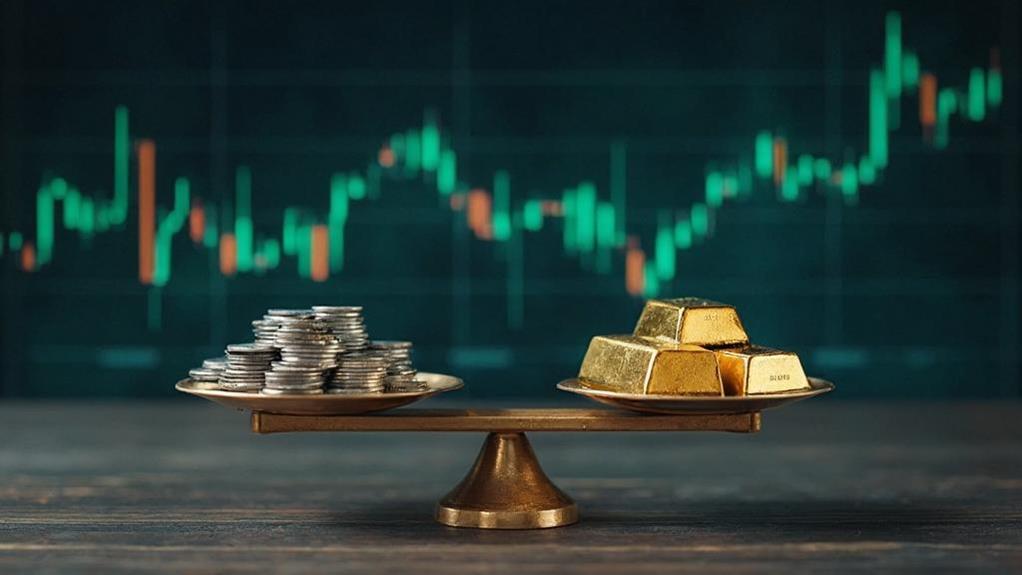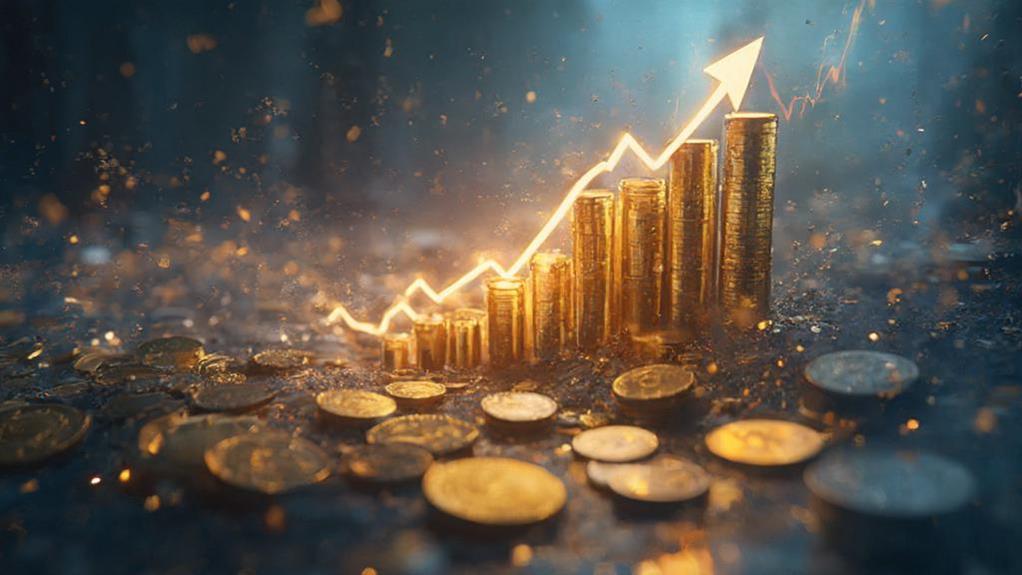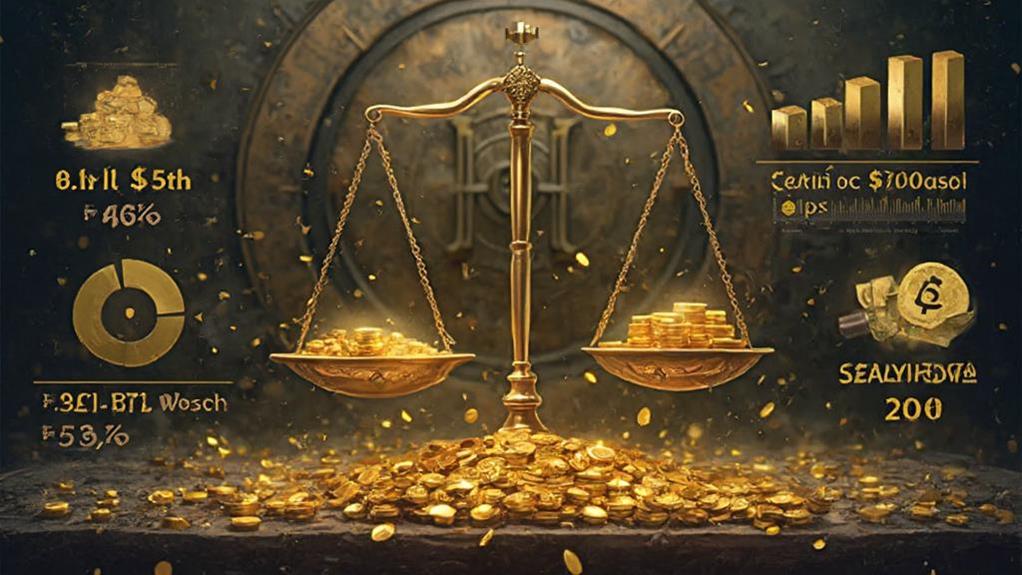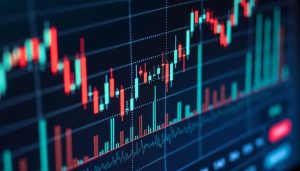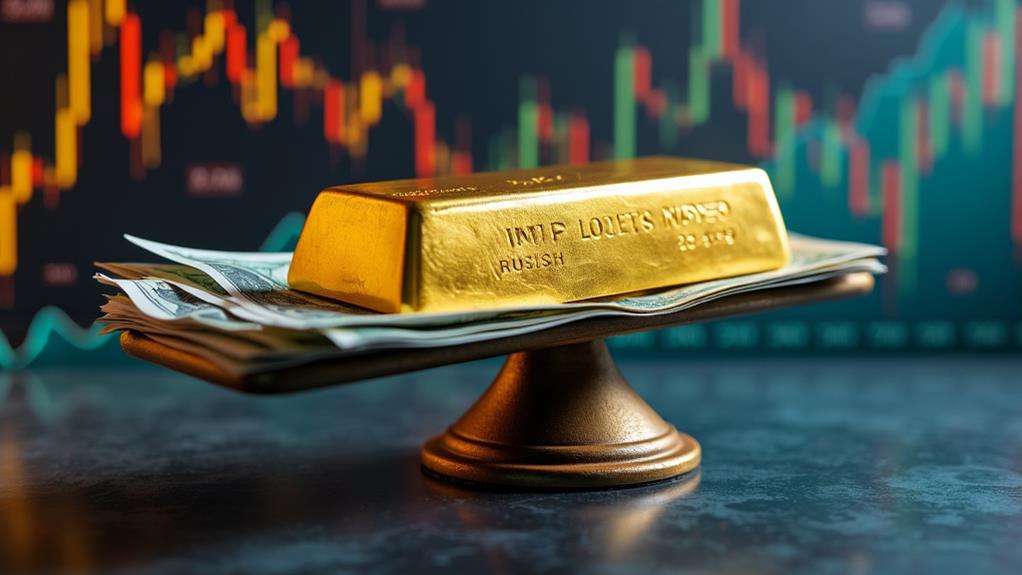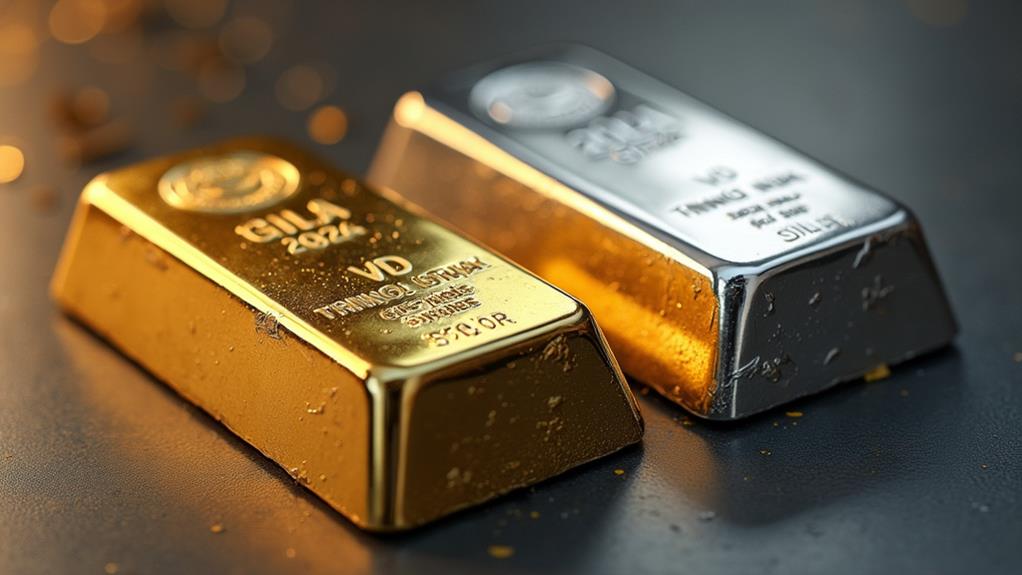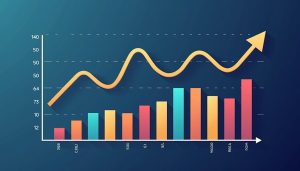In a world where financial stability often feels uncertain, more investors are turning to gold as a reliable asset, particularly through innovative options like a Gold IRA.
This article explores the insights of Ron Paul, a prominent advocate for sound money principles, and his endorsement of Birch Gold Group, which focuses on financial security through precious metals.
We will cover the essentials of investing in gold, the unique offerings of Birch Gold Group, and the benefits and risks associated with gold in your investment portfolio, including considerations of inflation tax.
Whether you’re a seasoned investor or just starting, this guide will help you make informed choices in gold investing.

Key Takeaways:
Ron Paul, a renowned economist and politician, endorses Birch Gold Group for gold investing. Birch Gold Group offers a variety of services and options for investing in gold, making it a top choice for many investors.There are potential risks and considerations to keep in mind when investing in gold, such as market fluctuations and potential scams.

Why is Ron Paul Endorsing Birch Gold Group for Gold Investing?
Ron Paul endorses Birch Gold Group for gold investing due to its commitment to client education, the promotion of financial security through precious metals, and its expertise in retirement savings strategies.
With a strong belief in the value of sound money, Paul appreciates Birch Gold’s dedication to providing individuals with accessible options for diversifying their portfolios with gold and other precious metals.
This endorsement stems from his understanding of the economic benefits associated with gold investing, particularly during times of market volatility and inflation, where wealth preservation becomes crucial.

What are the Benefits of Investing in Gold?
Investing in gold provides numerous benefits that make it an attractive addition to any investment portfolio, particularly during periods of economic instability and market volatility, enhancing overall financial literacy among investors.
Gold serves as a hedge against inflation, helping to preserve wealth over time, while its intrinsic value and limited supply contribute to its appeal as a store of financial security. Gold investments can enhance portfolio diversification, reducing overall risk and providing stability in uncertain economic conditions.
In fact, historical data shows that gold has consistently outperformed standard stock market returns during economic downturns, further underscoring its role in protecting personal finance. For instance, during the 2008 financial crisis, gold prices surged by over 25%, showcasing its resilience.
- Gold holds an average annual return of around 10% in the long-term, making it not just a safe haven but also a potential source of growth.
- Experts recommend allocating 5-10% of investment portfolios to gold to balance risks effectively.
By incorporating gold, especially through options like Gold IRAs, investors can effectively safeguard their assets against market fluctuations and inflation, ensuring a more stable financial future and aligning with the principles of sound money. The incorporation of this precious metal may not only fortify one’s portfolio but also provide peace of mind amidst uncertain times.
Why is Ron Paul a Believer in Gold Investing?
Ron Paul is a staunch believer in gold investing due to his conviction that sound money is essential for a stable economy and personal financial health, which he believes is critical in today’s economic climate.
He often cites the history of gold as a reliable form of currency that has maintained its value over time, contrasting it with fiat currencies that can be devalued by inflation and poor monetary policy, illustrating the significance of the Austrian School’s principles.
Paul’s advocacy for financial literacy emphasizes understanding the historical significance of gold and its role as a hedge against economic uncertainty, informing individuals about the importance of wealth preservation.
In Ron Paul’s view, embracing the principles of sound money can enable individuals to protect themselves from economic turmoil, particularly in light of events like the 2008 financial crisis. He often refers to pivotal moments in history, such as the Great Depression and the stagflation of the 1970s, where the abandonment of the gold standard led to severe financial instability.
The 1970s’ stagflation period serves as a cautionary tale, showcasing how unchecked monetary policy can erode purchasing power, making gold an appealing alternative and reinforcing his stance to End the Fed.
- By advocating for education on these issues, he believes that people can make informed decisions about their finances.
- This knowledge can foster a sense of security, especially in volatile times.
Paul encourages a proactive approach, suggesting that rather than relying solely on government assurances, such as those from the Central Bank, individuals should take personal responsibility for their economic well-being. In essence, understanding the past provides critical insights into making sound investment choices, ultimately contributing to greater economic resilience.
What is the Birch Gold Group?

The Birch Gold Group is a leading company specializing in gold investing and precious metals, offering a variety of services aimed at helping individuals secure their financial future through informed investment choices, guided by principles of financial literacy.
Visit Offical Birch Gold Website Ron Paul Endorses To Get Started
Founded in 2003 with a mission to educate clients about the benefits of investing in gold, Birch Gold provides tailored solutions for retirement savings and wealth preservation, ensuring that clients understand the value of diversifying their portfolios with physical gold and other precious metals. Their emphasis on client education sets them apart in the marketplace.
What Services Does Birch Gold Group Offer?
Birch Gold Group offers a range of services designed to assist clients in effectively investing in gold and precious metals, including the establishment of Gold IRAs, which are crucial for retirement savings, and personalized investment strategies.
Visit Offical Birch Gold Website Ron Paul Endorses To Get Started

Their focus on client education ensures that individuals are well-informed about their options and the benefits of diversification with precious metals. Birch Gold provides support in navigating market volatility, helping clients make strategic decisions for wealth preservation.
Plus these foundational offerings, Birch Gold Group also conducts comprehensive market analyses that allow clients to understand current trends, including the implications of inflation tax, and make informed choices. They provide:
- Consultative Services: Personalized consultations that tailor strategies based on individual goals.
- Investor Resources: Access to educational materials, webinars, and articles that enable clients.
- Secure Storage Solutions: Options for the safe and secure storage of precious metals.
Each of these services underscores Birch Gold’s commitment to client education and support, ensuring that investors, including those new to gold investment, can navigate the precious metals landscape with confidence and clarity.
Visit Offical Birch Gold Website Ron Paul Endorses To Get Started
What Sets Birch Gold Group Apart from Other Gold Investing Companies?
Birch Gold Group distinguishes itself from other gold investing companies through its commitment to client education, transparency, and personalized service, aiming to enable investors with the knowledge needed to make informed financial decisions.
Unlike many competitors, this firm places a strong emphasis on educating clients about the value of gold and precious metals, focusing on long-term financial security and wealth preservation strategies tailored to individual needs, including insights into the history of gold. Their comprehensive approach ensures that clients feel confident and secure in their investment choices. Birch Gold Group excels in providing:
- Personalized consultations that assess individual financial situations and investment goals.
- Informative resources such as webinars and guides that break down complex concepts into easily digestible information.
- Consistent communication and support, enabling clients to stay informed about market trends and the performance of their assets.
By prioritizing these unique characteristics, they effectively foster a deeper understanding of the gold investing landscape, which enables clients to make prudent financial decisions.
How to Invest in Gold with Birch Gold Group?
Investing in gold with Birch Gold Group is a streamlined process designed to help clients establish a secure financial future through precious metals, offering guidance on options like Gold IRAs.
Step 1 —- > Visit Offical Birch Gold Website Ron Paul Endorses To Get Started
To start a Birch Gold IRA, investors typically consult with a Birch Gold Specialist.
Investing in gold with Birch Gold Group is a straightforward process that begins with understanding your investment options, including setting up a gold IRA or purchasing physical gold.
The company offers various avenues for investment, including Gold IRAs and physical gold coins, which provide a tax-advantaged way to include gold in retirement savings.
With dedicated support from knowledgeable representatives, clients can navigate the investment process with ease, ensuring that their strategies align with personal financial goals and market conditions.
What are the Different Options for Investing in Gold with Birch Gold Group?
Birch Gold Group provides several options for investing in gold, catering to diverse investor preferences and financial objectives, including physical gold coins, Gold IRAs, and gold ETFs. Each option offers unique advantages, allowing individuals to tailor their investment strategies according to their risk tolerance and market outlook. Additionally, the company aligns with the principles of the Austrian School and the Libertarian Party, emphasizing economic stability.
Understanding these investment avenues can be pivotal in ensuring long-term financial stability. For instance, physical gold coins, such as the American Gold Eagle and the Canadian Maple Leaf, provide tangible assets that you can hold, appealing to those who favor a hands-on approach. Alternatively, Gold IRAs enable individuals to include precious metals in their retirement portfolio, offering potential tax advantages. Meanwhile, gold ETFs offer simplified exposure to gold without the need for storage, making them suitable for investors seeking liquidity and minimal maintenance. This approach aligns with Ron Paul’s vision of protecting wealth from the Federal Reserve’s policies.
By weighing the benefits and considerations associated with each option, clients can confidently decide which path aligns with their overall wealth preservation:
- Long-term appreciation potential
- Tangible asset benefits
- Tax advantages in retirement accounts
and enhances their financial security.
What is the Process for Investing in Gold with Birch Gold Group?
The process for investing in gold with Birch Gold Group is designed to be straightforward and efficient, ensuring clients have a clear understanding of each step involved. Initially, clients consult with a representative to discuss their investment goals and options, including the establishment of a Gold IRA or the purchase of physical gold. Following this, the necessary paperwork is completed, and funds are allocated toward the chosen investments, allowing clients to start securing their financial futures.
To facilitate a seamless experience, Birch Gold Group emphasizes client education and support throughout the process, reflecting their commitment to the Peace and Prosperity ethos advocated by Ron Paul. Understanding the intricacies of gold investment is crucial for well-considered choices. Here’s a step-by-step breakdown:
- Initial Consultation: Clients engage in a detailed discussion with a specialist to outline personalized investment strategies.
- Paperwork Completion: The requisite documentation is swiftly processed, ensuring compliance and security.
- Fund Allocation: Funds are directed towards the selected options, such as a Gold IRA or physical gold purchases, providing flexibility and potential growth.
- Ongoing Support: Clients receive continued guidance, answering any queries and adjusting investments when necessary to align with changing market conditions.
This commitment to clarity and client support makes investing in gold not only viable but also enableing.
What are the Risks and Considerations of Gold Investing?
While gold investing can provide numerous benefits, it also comes with risks and considerations that potential investors should carefully evaluate before diving into the precious metals market, especially in light of potential interventions from the Central Bank. Market volatility can lead to fluctuations in gold prices, impacting the overall value of investments, especially during periods of economic uncertainty. Additionally, understanding the implications of holding physical gold versus gold-backed securities is crucial for making informed investment choices that align with one’s financial objectives.
What Factors Can Affect the Value of Gold?
Several factors can significantly affect the value of gold, including economic indicators, inflation tax, and overall market volatility, which play a crucial role in shaping investor sentiment and demand, particularly in the context of the Federal Reserve’s changing policies. These elements not only reflect the stability of financial systems but also influence investors’ perceptions of safety and growth potential in turbulent times.
Changes in monetary policy, driven by the decisions of the Central Bank, geopolitical tensions, and shifts in currency strength can also impact gold prices, making it essential for investors to stay informed about the broader economic landscape.
- Monetary policy: Central banks’ decisions on interest rates can lead to shifts in gold demand; lower rates typically drive up gold prices.
- Geopolitical tensions: Conflicts and uncertainties can increase gold’s appeal as a safe haven, prompting investors to flock to this asset during volatile periods.
- Currency fluctuations: The strength of major currencies affects gold prices; a weaker dollar often translates to higher gold values.
Understanding these influences can help investors make timely decisions regarding their gold investments, securing their portfolios against unpredictable market shifts.
What are the Potential Risks of Investing in Gold?
The potential risks of investing in gold include market fluctuations, economic uncertainty, and the possibility of regulatory changes that may impact precious metals investments. While gold is traditionally viewed as a safe haven asset, its value can still experience volatility similar to other investment classes, especially in response to shifts in economic conditions. Investors must assess these risks carefully to develop a sound investment strategy that aligns with their financial goals and prepares them to navigate the potential pitfalls outlined in Ron Paul’s works such as “The Revolution: A Manifesto.”
Considering these factors, investors should remain aware of several critical elements:
- Market Fluctuations: The gold market can be highly reactive, influenced by various external factors including geopolitical events, currency strength, and changes in interest rates. This volatility could result in unexpected gains or losses, making timing essential.
- Regulatory Considerations: Changes in government regulations regarding mining and trading practices may impact the overall market landscape. Investors should monitor potential legal shifts that could alter mining operations or tariffs on gold imports.
- Economic Uncertainty: Economic conditions, such as inflation or recession, can affect gold prices. While often seen as a hedge against inflation, uncertain economic times may lead to fluctuations, prompting reevaluation of one’s investment approach.
Ultimately, a well-rounded understanding of these risks is necessary for making informed decisions in gold investments.
What Should Investors Consider Before Investing in Gold?
Before investing in gold, investors should consider several key factors, including current market trends, their financial strategy, and personal finance goals, to ensure that their investment aligns with their overall portfolio objectives, including the need for economic stability. Assessing one’s risk tolerance and understanding the historical performance of gold can provide valuable insights into its potential value as an investment. Evaluating the different forms of gold investment—such as Gold IRAs or physical coins—is crucial for making informed choices.
Furthermore, market analysis, informed by insights from experts like Phillip Patrick, plays a vital role in guiding investors toward the most opportune times to buy or sell. This requires staying abreast of geopolitical events and economic indicators that can influence gold prices, especially in light of potential legislative changes such as those advocated by the End the Fed movement.
- Investors should also consider financial planning—how much of their portfolio is allocated to gold.
- Having clear personal finance goals will help determine if the pursuit of gold investment aligns with long-term objectives.
- Monitoring costs associated with different gold investments is equally important, as fees can erode profits significantly.
Thus, by taking these factors into account, one can navigate the complexities of gold investing with greater confidence and clarity.
Frequently Asked Questions
What is Ron Paul’s stance on gold investing?
Ron Paul, a prominent figure in the Libertarian Party and veteran of the U.S. Air Force, is a strong advocate for gold investing and has been for many years. He believes that investing in gold is a way to protect yourself against the devaluation of paper currency and inflation.
How does Ron Paul endorse Birch Gold Group?
Ron Paul has publicly endorsed Birch Gold Group as a reliable and trustworthy gold investment company. He has praised their knowledge and expertise in the industry and has personally invested in their services, reflecting his confidence in the Birch Gold Group’s commitment to gold as a secure investment.
Why did Ron Paul choose to endorse Birch Gold Group?
Ron Paul specifically chose to endorse Birch Gold Group due to their commitment to providing their clients with valuable education and resources about gold investing, aligning with his philosophy on financial literacy and independence. He believes that they are a reputable company with a strong track record.
What are the benefits of investing in gold according to Ron Paul?
According to Ron Paul, investing in gold can provide a hedge against economic uncertainty, protect against inflation, and serve as a long-term store of value, especially as conditions change in the run-up to 2024. He also believes that gold has historically performed well during times of market volatility.
Does Ron Paul recommend investing in gold with Birch Gold Group?
Yes, Ron Paul recommends investing in gold with Birch Gold Group due to their expertise and reputation in the industry, which he believes is vital for achieving financial security. However, he also encourages individuals to do their own research and make informed decisions about their investments, particularly as the 2022 and 2024 elections approach.
What makes Birch Gold Group stand out to Ron Paul compared to other gold investment companies?
Ron Paul has stated that Birch Gold Group stands out due to their commitment to educating their clients and their dedication to providing excellent customer service, a practice he believes is essential for fostering trust in the gold investment community. He believes that they are a trustworthy and reliable option for those interested in gold investing.





